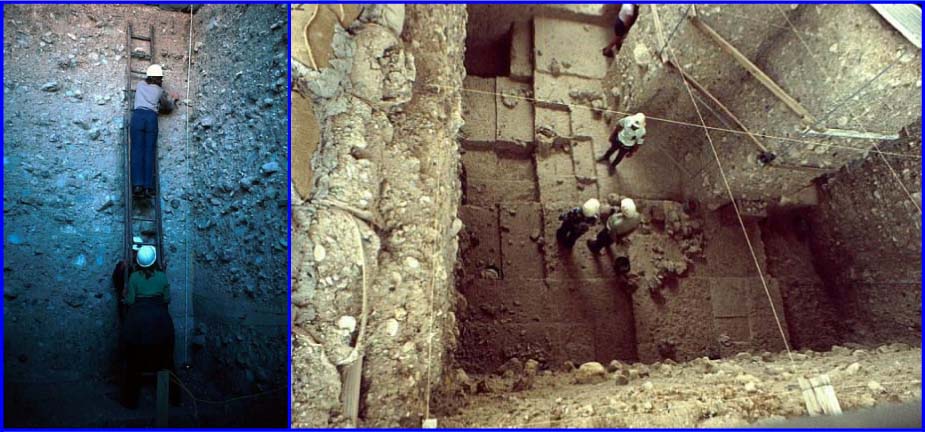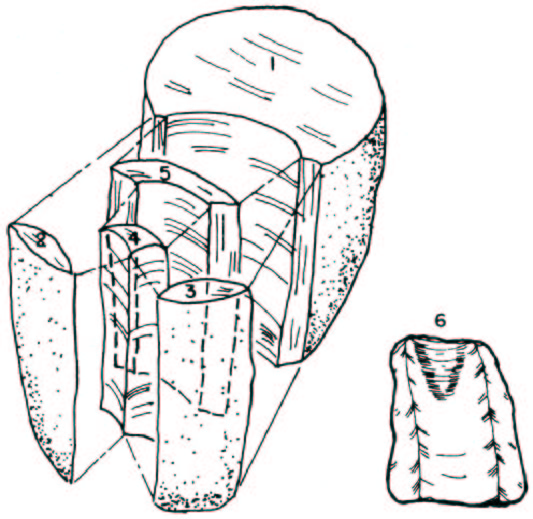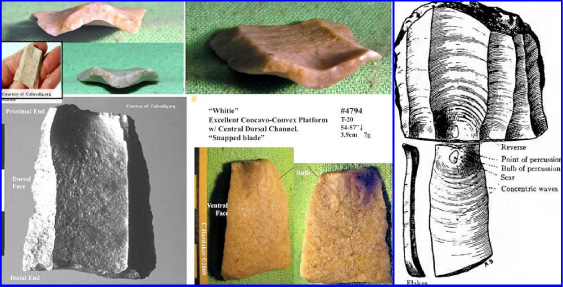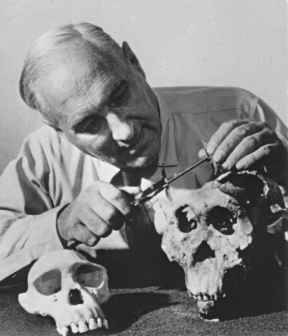 and
more trustable than anything the public has been taught by the physical
anthropology community and that famed anthropologist Louis Leakey’s
work at Calico was just as valid, if not more valid, than his work in
Africa (Fig. 1).
and
more trustable than anything the public has been taught by the physical
anthropology community and that famed anthropologist Louis Leakey’s
work at Calico was just as valid, if not more valid, than his work in
Africa (Fig. 1).Fig. 1. The late Dr. Louis Leakey, Project Director at Calico Early Man Site from 1963 until his death in 1972. Leakey’s expertise as the single most recognizable name in early human archaeology and paleontology is being undermined by destruction of the evidence from Calico.
This is because Leakey’s Africa work was prompted by standard Darwinian training which is not known for engendering critical thought like true sciences but instead for its pre-commitment to a single belief system—that humans evolved from ape-like ancestors and that Africa would be the most natural place to find such ancestors, with ‘hominids’ moving out from that origin and making it to the Americas a mere 12-15 thousand years ago.
With conflicting cultural evidence blocked from normal scientific discourse the public has no idea that this evolutionary paradigm is not as secure as they’ve been taught.
Calico, a site near Barstow California, with evidence of an early human cultural presence in the Americas was a risk for Leakey but he thought outside the box to assess new evidence—a normal practice in normal science.
As mentioned in Part 1—and important to repeat—one of Leakey’s motivations for excavating Calico (Fig. 2) was his observation that there were too many indigenous languages (not to mention civilizations) in the Americas to have developed in the short time humans are supposed to have been there.
Fig. 2. Two views of Calico Master Pit 1
started by Dr. Louis Leakey outside Barstow California in 1963 with
funding from the National Geographic Society. Left photo: T. Oberlander; Right photo: D. Griffin; Calicodig.org.
It was interdisciplinary thinking. Most evolutionary anthropologists are preoccupied with physical appearance (obvious or genetic) and care very little about how ideas spread, how human creativity actually works, or how to ‘objectively’ assess levels of creativity represented in artifacts from the Pleistocene. This limits their views of the past and encourages development of ape-man mythologies. For these reasons anthropologists view sites such as Bilzingsleben in Europe (Homo erectus c. 400,000 years BP) as ape-man sites despite evidence of modern-level creativity; and similarly-dated sites in the Americas such as Calico or Hueyatlaco are simply ignored.
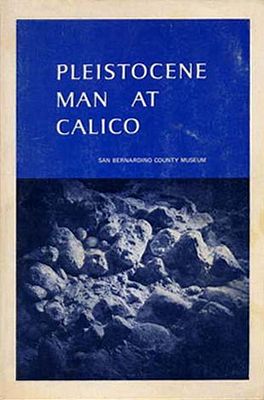 Leakey’s
openness to Calico is what makes him stand out in anthropology—being
willing to change his opinions if the evidence warrants it. By doing
so, however, he garnered the ridicule of the mainstream and their
pre-commitment to a slow migration out of Africa which made the early
dates of Calico automatically unacceptable, i.e. “too old,” as
archaeologist Chris Hardaker explains in The Abomination of Calico, part 1 (PCN #6, July-August 2010). Anthropologists focused on physical traits can’t
think outside the box. Later accusations included psychological
instability in Leakey for his interest in Calico. Weak science goes
after the messenger.
Leakey’s
openness to Calico is what makes him stand out in anthropology—being
willing to change his opinions if the evidence warrants it. By doing
so, however, he garnered the ridicule of the mainstream and their
pre-commitment to a slow migration out of Africa which made the early
dates of Calico automatically unacceptable, i.e. “too old,” as
archaeologist Chris Hardaker explains in The Abomination of Calico, part 1 (PCN #6, July-August 2010). Anthropologists focused on physical traits can’t
think outside the box. Later accusations included psychological
instability in Leakey for his interest in Calico. Weak science goes
after the messenger.
Such blinkered thinking has caused anthropologists to publish one science blunder after another yet all are presented to the public as facts supporting evolution while blocking from the public evidence conflicting with these “facts.” They are trained to never question evolution and readily ridicule those who do. It is not how normal science works (Fig. 3).
Fig. 3. Dr. Leakey may have been incorrect about a purported hearth at Calico but this is how “normal” science works. What is not normal is to regard a researcher who looks at evidence as a fool or to question their stability. Evolutionary anthropology commonly does this because all conflicting evidence is seen as a threat.
Normal sciences train one to be a critical thinker and if new evidence arises that stirs a question it is looked into as Leakey did with Calico; and if it challenges prior ideas then researchers are open to moving in a new direction. This is what Leakey did when he committed to excavating Calico.
To keep some continuity in this Part 2, before the rest of Leakey’s talk, here again are the relevant PCN articles:
Articles by co-founder Chris Hardaker